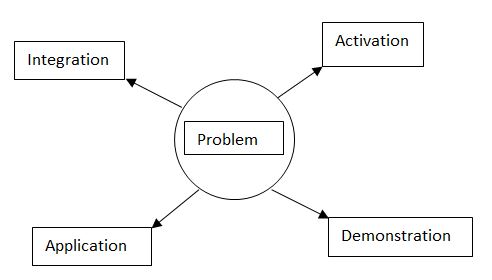Introduction
E-Learning is the provision of training and education using digital resources. It is delivered via internet-connected electronic components such as PCs, cell phones, and tablets. Many students worldwide may now attend various courses on the internet without leaving their homes. The study explores the advantages and disadvantages of electronic learning. Students save time and money, which is one of the most evident benefits of e-learning. Unlike conventional learning methods, e-learning allows students to control their time and attend online courses when convenient for them. No student should have to spend money on travel or bother about meals on the road.
The disadvantage is that a fruitful online program requires user-friendly and dependable technology. Even though every technology has its unique flaws and regrettably, it is no longer a matter of if but when the technology utilized in an online course may fail. When everything is going well, technology is meant to facilitate the learning experience (Rosenberg, 2006). Malfunctions, on the other hand, can happen at any point anywhere along the system. Internet connection may break, or the institution hosting the link may become overburdened with clients and fail. Technology is neither smooth nor dependable in such cases, which might hinder learning opportunities.
There are several myths about e-learning, one of which is that e-learning reduces interaction between the student and the teacher. That is not to say that it will not permit interaction (Rosenberg, 2006). Instead of communicating in a traditional classroom setting, students are glued to their computer displays. Teachers place learners in breakout chambers for small group encounters. E-learning allows less distracted engagement as they can track all student development more properly, and students may have greater engagement with the instructor. E-Learning allows for extensive monitoring and accountability, with data available at the individual and departmental levels.
Discussion
Several reasons contribute to the continuous evolution of the global workforce. The learning process changes because of the competitive corporate scene and the digital revolution that are the foundation. Trends, on the other hand, have seen an increase in the value of e-learning.
- The competitive corporate scene in e-learning includes numerous aspects, such as increasing productivity, expanding people’s capacities, and constructing learning experiences. Most corporate learning is offered through a mix of online and in-person events. While our data suggest that immersive L&D interactions in the classroom continue to be extremely valuable, leaders have informed us that they are extremely busy until late at night, leaving little time for sitting in a classroom.
- Digital evolution in e-learning must share the current quality research studies in e-learning and knowledge management (Holmes & Gardner, 2006). It aims to create a platform for pioneering research in the growing new terrain of knowledge-intensive economies, which necessitates the combination of learning and knowledge. Knowledge management aims to use and develop the institution’s knowledge assets to achieve better processes, enhanced organizational habits, and timely decisions that improve overall organizational performance. There are three types of knowledge management: explicit knowledge, tacit knowledge, and implicit knowledge.
Rosenberg’s proposition that proposes performance-led learning solutions goes a step further compared to the current approach that proposes an integration of online and physical training. According to Rosenberg, implementing performance-led learning solutions will result in smart organizations that fully harness the maximum advantages of learning, productivity, and change programs of management. In the case of coaching through e-learning procedures, the key is for the management to let the learners be rather than imposing their style of dealing with issues. The instructor must consider students concerning their ability rather than their performance.
Merrill’s First Principle of Instruction
Merrill’s ‘First Principles of Instruction’ summarizes the common components discovered in various current instructional methods and theories. It adopts a problem-centered approach that is backed by four stages of education. First and foremost, the challenge is centered on real-world tasks. Then, to guarantee successful instruction, the four steps of guidance are present: activation, presentation, application, and integration. Merrill’s concept comprises five principles comprising the challenge and four phases.

In the real world, every concept offers a variety of approaches for incorporation into design. Issues-centered tasks might be displayed to work as real-world problem statements that must be handled (Merrill, 2013). Recalling a similar experience might be utilized to relate to newfound information supplied during the prototype stage for activation. Scaffolding may be used to regulate application, where assistance is gradually reduced to give the learner more autonomy until, eventually, integration strategies might include learners exhibiting, producing, reflecting, or sharing their new skills and knowledge.
Conclusion
In conclusion, when these related concepts are utilized correctly in an educational product or situation, they will boost student learning. Learners can seek out new information with learner coaching in the third principle. Students work through a progression problem. Students are given suitable instruction. Merrill’s beliefs emphasize that learning increases when students participate in real-world problem-solving. The knowledge base is used to lay the groundwork for new information. The learner is shown new information.
References
Holmes, B. & Gardner, J. (2006). E-learning: concepts and practice. SAGE Publications, London.
Merrill, D. (2013). First principles of instruction: identifying and designing effective, efficient, and engaging. Pfeiffer, San Francisco, cop.
Rosenberg, M. (2006). Beyond e-learning: approaches and technologies to enhance organizational knowledge, learning, and performance. Pfeiffer, San Francisco, CA.